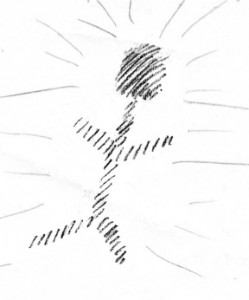podcast 147 – Dr. Daniel McKaughan on faith – Part 1
Is faith, as Mark Twain quipped, believing what you know ain’t so?
Is faith, as Mark Twain quipped, believing what you know ain’t so?
I missed an excellent post by our friend the Maverick Philosopher back in January: …if the proper parts of a cat can be feline in the very same sense in which the cat is feline, without themselves being cats, then we have an analogy that renders intelligible the claim that the Persons of the Trinity are divine without being Gods. The picture is this: God or the… Read More »The Maverick Philosopher: Are the divine persons parts of the triune God?

If you defend a problematic doctrine as a Mystery, you’re asserting that it to some degree lacks what I call “understandable” content. “Understandable” content is a proposition (thought, claim) that positively seems consistent to you. A claim may fail to be understandable for one of two reasons.Read More »Dealing with Apparent Contradictions: Part 15 – Positive vs. Negative Mysterianism
My paper critiquing the Brower-Rea “constitution” approach to the Trinity has now been published in Philosophy and Theology. I just received the issue this week. Pre-print is on the home page. I worked very hard on this, off and on, for more than two years, and tried (with limited success, I think) to make the discussion intelligible to non-philosophers. It’s a metaphysics-heavy discussion though. My… Read More »publications update
Catholic analytic philosopher Tim Pawl (University of St. Thomas, in Minnesota) argues that this is logically consistent: Jesus has both a divine and a human nature.
His answer is challenged by another talented young Catholic philosopher, Tomas Bogardus, of Pepperdine University. With their permission, I’ve reposted their dialogue from Facebook. I thought it deserved a wider audience.
From that same thread, I learned that Dr. Pawl is working on a book on the metaphysics of the Christology that comes from the “ecumenical” councils. I’ve thought and taught a good bit about those in recent years, and plan to discuss them in upcoming podcasts, so I look forward to seeing this book, and the discussion it will generate.
Which is mightier – this beard or this one?
You decide. I’ll weigh in with a comment later.
Here, unedited but for the addition of a few explanatory links (and a gratuitous picture), is their dialogue:Read More »Tim Pawl: a God-man is possible
In what sense, according to Craig and Moreland, are the Father, Son, and Holy Spirit each “divine”? Well, consider Rover. They’d say that the following four things are canine: Rover Rover’s nose Rover’s tail Rover’s left ear So, just as the parts of a dog are just as canine as the dog, so maybe “we could think of the persons of the Trinity as divine… Read More »Trinity Monotheism part 5: “divine”
This time, an answer to Nye by Anglican minister and writer William Sherlock (c. 1641 – 1707 – pictured to the left). He offers a unique, but to us surprisingly contemporary rational reconstruction of the claims in the “Athanasian Creed.” Did he convince his fellow Anglicans that the “Athanasian Creed” is, after all, self-consistent? We’ll also look briefly at a sort of defense of the “Athanasian… Read More »podcast 5 – Anglicans Defending “Athanasius”

In the last post, I explained that Nestorians believe that a complete individual human nature is indiscernible from an individual human person.
Monophysites also take this idea very seriously. In fact, the Monophysite takes very seriously the more general claim that a complete individual nature of any kind is indiscernible from the corresponding individual that belongs to that kind (for instance, a complete individual cow-nature just is the individual cow in question). So if there are two natures in Christ, then there will be two individuals that correspond to each of those natures.
But the Monophysite does not want to say that there are two persons in Christ, so he will insist that there is just one nature in Christ. That way, there will just be one person. But since Christ is both human and divine, this one nature must be a special hybrid of divinity and humanity.
The strongest form of Monophysitism would claim that this hybrid Christness-nature has all divine properties, and all human properties. This, however, is incoherent, for it would amount to two persons as well. After all, having all the divine properties is sufficient for membership in God’s-kind, and having all human properties is sufficient for membership in human-kind. There would, then, still be two natures, which contradicts the initial claim that there is just one (allegedly) hybrid nature.Read More »Christology and Heresy 5 – Monophysitism Proper (JT)
St. Anselm was the Roman Catholic archbishop of Canterbury, and an important medieval Christian philosopher. He defined the concept of God as “that than which no greater can be thought.” Using this concept, he argues that there must actually be such a being; this is his famous “ontological” argument for God’s existence. And he also deduces that this being must be eternal, and omnipotent (etc.)… Read More »podcast 64 – Dr. Mark C. Murphy on Anselmianism about God
In this recent book, Dr. Winfried Corduan re-opens the case for “original monotheism,” the view that the forms of human religion which are probably the oldest, are mostly monotheistic, which is what one would expect if the earliest human religions were all or mostly monotheistic.
Here’s a long but engaging interview by Sean Finnegan at his Christian Monotheism website. (Podcast RSS feeds here.) The subject, a young man named Christopher Amelung, underwent the change of theology noted above. He doesn’t recount all of the relevant arguments and exegesis; it’s rather a narrative of his own thoughts, emotions, and relationships. This is not a deconversion story, but a story of a… Read More »Reformed trinitarian to unitarian Christian
In this episode, Dr. Craig A. Evans and I discuss the surprising and bold methodological claims about doing history in chapter 4 of Dr. Ehrman’s How Jesus Became God. Along the way we bring up such topics as Joseph Smith, the Book of Mormon, the historicity of the New Testament gospels, the views of David Hume (pictured above) on belief in miracles, the probability of… Read More »podcast 39 – Dr. Craig Evans on Dr. Bart Ehrman’s historical methodology
A poor exchange. Read it first – then my comments. Where do I start? The unitarian behaves poorly. Pretending to ask questions, he instead puts forward objections. This is disrespectful. And it makes the compliments at the start seem disingenuous, which is obnoxious. But Bill serves it back, by sarcastically labeling the thing “Muslim objections…” Cute. Are these objections “simple-minded”? No, not really. What they are,… Read More »How not to conduct theological dialogue
Happy Easter. For the uninitiated, this holiday really has nothing to do with a bunny and colored eggs. What we’re celebrating is this: Saturday evening, when the Sabbath ended, Mary Magdalene, Mary the mother of James, and Salome went out and purchased burial spices so they could anoint Jesus’ body. Very early on Sunday morning, just at sunrise, they went to the tomb. On the… Read More »He is Risen!
I’ve been reading I Told Me So (review) by Gregg Ten Elshof, a USC PhD who who teaches and chairs the Philosophy Department at my undergraduate alma mater. He’s been thinking about this topic for a long time (part 2) and so far, I really like the book. It is clearly written, insightful, and he trains his guns on self-deceptions by Christians in particular. Some of… Read More »You’re Foolin’ Yourself and You Don’t Believe It – Part 1

A simple being containing multiple distinct “persons” – D’oh!
Theologian Lewis Ayres is the author of this worthy book. In it, he hammers the point that the Latin vs. Social trinitarian categories aren’t helpful in understanding post-Constantinople trinitarian theology. I think he’s right about that, though I persist in using the terminology because it is helpful for 20th and 21st century theories. Ayres’s book is a wonderful piece of patristic scholarship, but it is also an extended polemic against social trinitarians. Basically, he thinks that what he aptly calls the pro-Nicene tradition has gotten short shrift in recent theological work on the Trinity, and he very helpfully presents the core of that tradition and bats down a great many mis-readings of it. Obviously, he’s sympathetic to this sort of trinity theory, to put it mildly. This will definitely come up when I discuss social theories.
Here I just wanted to pass on a striking quote, which to me spotlights a central problem that many people have with the mainstream classic Latin or Pro-Nicene tradition.Read More »Quotes: Lewis Ayres on Pro-Nicene 3rd-4th century trinitarianism
The so-called Athanasian Creed (also known by the Latin words it begins with, Quicunque vult) is considered by many to be the very definition of “the” orthodox doctrine. It is of uncertain origin, although many readers think it has a strongly Augustinian flavor (which if true shows it is not from Athanasius himself, who died before Augustine was converted). It has long been considered authoritative… Read More »The Orthodox Formulas 3: the “Athanasian” Creed
Maria Rosa Antognazza teaches at King’s College London, where she also directs the Centre for the History of Philosophical Theology. She has written a highly praised forthcoming intellectual biography of the great Leibniz. Below is my review of her book pictured here. The review is forthcoming in Religious Studies. Bottom line: Leibniz employs positive and negative mysterian moves, as well as rational reconstruction of the… Read More »Dealing with Apparent Contradictions: Part 19 – Review of Antognazza on Leibniz